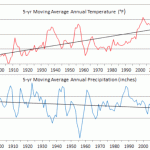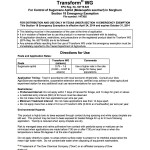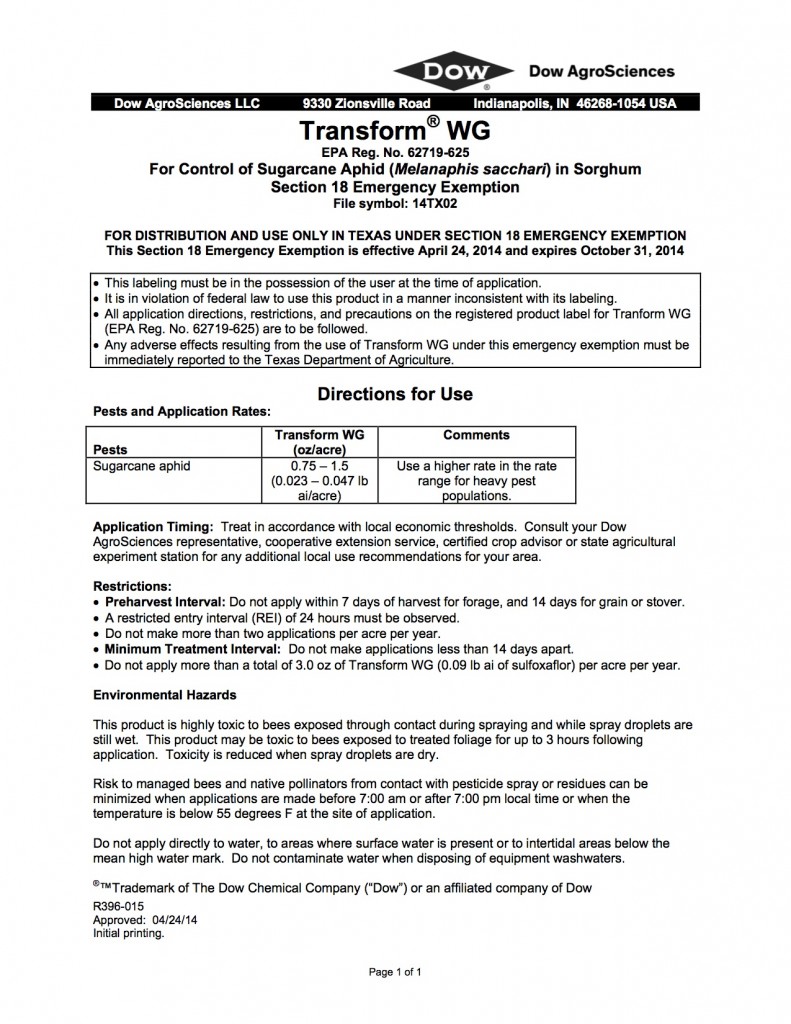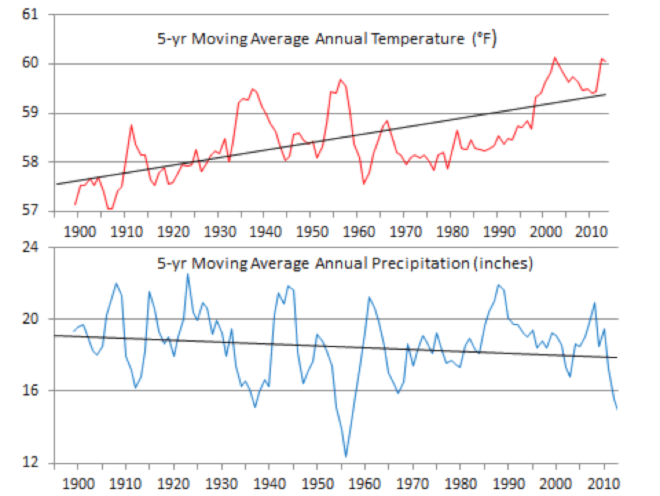Sorghum Export Event – The United Sorghum Checkoff Program (USCP) and Texas Grain Sorghum Producers (TGSP) are teaming up to bring the first annual Sorghum Export Event to Texas. The event will be held next week in Houston, Texas and will bring in about 20 of the top sorghum buying companies from Mexico, China, Japan and Spain. The event will also have about 30 domestic attendees who are capable of selling grain to international customers. The topics at the event will range from transportation, sorghum supply and demand, and international contract specifications to sorghum nutritional information and sorghum specialty products. The attendees will also tour the Port of Houston and a local sorghum farm. The purpose of the event is to educate buyers on the sorghum crop, to give buyers and sellers the opportunity to network in hopes to sell more sorghum in the future, and to address any concerns or questions buyers or sellers may have about the crop.
Rio Grande Valley & the Sugarcane Aphid – Texas A&M AgriLife Extension in the Rio Grande Valley observed more pressure from the sugarcane aphid last week and many fields were sprayed for the pest. Several fields that were observed had a significantly larger number of winged females compared to the last two weeks. This leads the researchers to believe that the pests are colonizing and distributing throughout sorghum fields and populating them. However, with the recent rains, researchers feel some of the aphid induced water stress will be reduced and might impact the economic thresholds referred to above. Although this pest is showing up, there is now a insecticide growers can use to control this pest as mentioned in the next story…
Transform Labeled for Use on Sugarcane Aphid in Texas – A few weeks ago, the EPA issued a specific exemption under the provisions of Section 18 of the Federal Insecticide, Fungicide and Rodenticide Act, as amended, to the Texas Department of Agriculture for the use of sulfoxaflor (Transform), on sorghum to control sugarcane aphid in Texas. The exemption was made possible by the efforts of many agencies in Texas including your Texas Grain Sorghum Producers Association and National Sorghum Producers. Transform is manufactured by Dow Agrosciences and the label for the insecticide may be found below. This specific exemption expires on October 31, 2014 but TGSA will continue to work with the legislature to get this passed indefinitely.
Chance of El Nino – The National Weather Service and the International Research Institute for Climate and Society predicted on May 8th that the chance of the U.S. going into an El Nino increases during the remainder of the year, exceeding 65% during the summer. ENSO-neutral continued during April 2014, but with above average sea surface temperature (SST) developing over much of the eastern tropical Pacific and persisting near the International Data Line. This data shows an increased likelihood of El Nino compared with the data from April, and shows that we are most likely to transition to El Nino during the summer. There is still uncertainty as to exactly when this will develop and an even greater uncertainty as to how strong it may become. Current probabilities show El Nino to occur in June at 67%, July at 71%, August at 74%, September at 75%, and October and November at 78%.
High Plains Drought Coupled with Temperature – After reading the El Nino story above, this next story might seem contradicting; however, many different researchers look at many different aspects to determine their forecast for the future so we like to provide you with a well-rounded outlook to make your own predictions. Recent rains across the Coastal Bend, Central Texas and the Rio Grande Valley came at just the right time to save this year’s sorghum crops, but crops that are beginning to be planted in the Texas High Plains are still in dire need of moisture. A recent article by West Texas A&M University with information provided by an agricultural researcher, Dr. B.A. “Bob” Stewart, says that increasing temperatures may be more pronounced than the decreasing precipitation. Dr. Stewart analyzed precipitation and temperature data from 1895-2013 for the Texas High Plains and in his graph below shows the trend lines indicate that the precipitation pattern is directly opposite to the temperature pattern. The article goes on to state that in the past, it is expected that temperatures would be lower during wet years and higher during dry years, but the significant increase in temperature strongly suggests that the temperature is the main driver. Since 1980, the average temperature have mostly increased and are higher today than during either of the historic Dust Bowls, suggesting the downward trend of precipitation in the High Plains is likely due to increasing temperature. Dr. Stewart ends his comments by stating, “Unitil and unless there is a downward turn in the temperatures, the return to precipitation amounts received during the ‘good old days’ may not occur.” To read the full article, click here. If this trend continues, growers will have to shift their practices to accommodate the continued drought.












